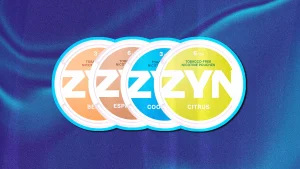What is leukaemia?
Leukaemia is a cancer of the blood. It is the uncontrolled and excessive proliferation of abnormal white blood cells in the bone marrow, which take over it and prevent the production of the remaining normal cells (platelets and red blood cells) while invading the blood and other organs.
What is bone marrow?
Bone marrow is a tissue made up of a mixture of cells in suspension. This tissue is called marrow and is found inside the bones. The bone marrow contains hematopoietic progenitor cells (HP). It stems cells because they give rise to all the adult cells that circulate in the blood and have the capacity for self-renewal and differentiation (they can generate all series of mature cells).
It is essential to differentiate the bone marrow from the spinal cord, the nerve cord that descends from the brain inside the vertebrae.
Who is affected by leukaemia?
Between 60 and 100 people per million inhabitants, of which more than half are children, are affected each year by this disease. Many of these patients have the possibility of saving their lives by receiving a bone marrow transplant.
In addition, you have to know that leukaemia is a disease that can appear at any age.
What types of leukaemia exist?
There are many types of leukaemia, depending on how quickly it forms and how the disease progresses. The most frequent are:
Myeloid, myelogenous or myeloblastic leukaemia: is the one that begins in the myeloid cells. A myeloid stem cell can produce red blood cells and platelets.
Lymphocytic, lymphoid or lymphoblastic leukaemia: is one that begins in the lymphoid cells. These cells can produce lymphoblasts, which have various white blood cells.
Within both types, acute and chronic leukaemias can be distinguished, and the symptoms are different in each of them, as we will see in the corresponding section.
What causes it?
We only know a few environmental factors related to the development of leukaemia, which are:
- Exposure to ionizing radiation occurs after the explosion of atomic bombs.
- Exposure to radiation that can escape from nuclear power plants.
- A higher incidence has been detected in people who handle some chemical products such as benzene, although this factor does not at all justify all the cases that occur.
- Some congenital or hereditary diseases predispose to changes in the DNA of the marrow cells and therefore increase the risk of developing leukaemia: Down syndrome, Fanconi, Noonan and others.
What symptoms does leukaemia cause?
In general, acute leukaemias manifest with the following symptoms:
- Tiredness and weakness.
- Fever.
- Sweats.
- Loss of appetite and weight.
- Anaemia.
- Bruises on the skin.
- She was bleeding from the nose or gums.
- Exaggerated menses: due to the lack of platelets.
- Recurrent infections: such as pneumonia or tonsillitis due to the lack of white blood cells.
On the other hand, many chronic leukaemias can go unnoticed and be detected by a simple blood test or further examination in which an overly large liver or spleen is found.
How is this disease treated?
Without treatment, leukaemia is a rapidly fatal disease. And this always has to be established according to the type of leukaemia that affects the patient, his age and the general state of his health. The following can be distinguished:
Chemotherapy: it is the primary treatment and is based on drugs to destroy the leukaemia cells. The drugs can be given orally or intravenously and are applied in cycles. In recent years, new drugs have appeared that help a lot in treating this disease, such as the so-called tyrosine kinase inhibitors and monoclonal antibodies.
Radiotherapy: consists of applying high-energy rays that damage cancer cells and prevent their growth. For this reason, it is used locally where there is an accumulation of malignant cells or throughout the body as conditioning for the bone marrow transplant.
Bone Marrow Transplantation (BMT or Hematopoietic Progenitor Transplantation -stem cells-): it is a treatment strategy that can be applied to specific patients and that increases the percentage of cured leukaemias and related diseases. It is a radical procedure used to treat infections of spinal cord origin whose conventional treatment is ineffective or has previously failed.
What is a bone marrow transplant?
When administering high doses of chemotherapy and radiotherapy to the patient, inevitably, the bone marrow, which is where the tumour settles, is also destroyed. For this reason, this transplant consists of replacing the stem cells of the patient’s blood with those of a healthy donor.
Thus, to prevent the patient from dying due to lack of bone marrow production, a sufficient quantity of stem cells is administered -provided by a compatible donor- to be able to repopulate the destroyed bone marrow. These stem cells are transfused to the patient intravenously, as in a blood transfusion. At 2 or 3 weeks, the transfused cells (marrow) begin to produce normal cells in the patient.
Given that 80% of patients do not have a compatible donor in their family, it is necessary to look for a healthy, voluntary and unrelated donor. To avoid rejection, the donated bone marrow must be compatible with the patient’s, and that only happens in one person in 40,000; That is why it is convenient that we are many voluntary donors.
What is a bone marrow donation?
For a person to provide another with healthy stem cells, they must be a bone marrow donor. The requirements to become a donor are:
Be older than 18 and younger than 55.
In good health: free from cardiovascular, kidney, lung, liver, or other chronic conditions, and no history of positive tests for hepatitis B, C, and acquired immunodeficiency syndrome (AIDS) virus infections.
If fulfilling these characteristics, a person decides to become a bone marrow donor. They must fill out a form and undergo a small blood draw to determine the histocompatibility group (HLA). From then on, it will be included in the World Network of Bone Marrow Donors (BMDW) through the REDMO (Spanish Registry of Bone Marrow Donors).
What types of bone marrow transplants are there?
Actually, rather than marrow transplant, we should talk about hematopoietic stem cell transplant (HSCT) since the origin of these is not always bone marrow.
Depending on the source from which the hematopoietic progenitors are collected, there may be:
Autogenic or autologous transplant: when the cells to be transplanted come from the patient himself and are collected at a time of remission of his disease.
Allogeneic transplant: when the cells come from another person. And in turn, this transplant can be:
-Unrelated: when the donor is a generous volunteer, not related to the patient.
-Identical relative: when the person donating the cells to be transplanted, a relative, generally a sibling, is 100% compatible.
-Haploidentical related: when the donor of the cells is related but only has 50% compatibility. This is a new procedure that requires more excellent manipulation of the cells to be transplanted and with which good results are being achieved. It is an option for those who do not have a 100% compatible family or non-related donor.
Depending on how the cells are collected for transplant, the transplant may be:
Apheresis or peripheral blood: this method is the most used in general and, mainly, in Spain. It consists of stimulating the multiplication of stem cells (hematopoietic progenitors) within the bone through the administration of drugs called colony formation stimulators. These drugs cause the multiplied cells to circulate through the veins, and from there, using a machine capable of selecting the type of cell we want, they are collected with a straightforward puncture in the vein. The process lasts between 2 and 8 hours and does not require any hospitalisation.
Harvest or bone extraction: this method consists of pricking at the level of the iliac crests (the bones that make up the hip) and aspirating the content from inside the bone. This manoeuvre must be repeated, changing the plane of the needle. As this is painful for the donor, anaesthesia is required, either epidural or general. The donor is admitted to the hospital, the procedure is done one morning, and the donor goes home the next day.
Umbilical cord: the cells are collected from the umbilical vein, by puncture, just after delivery since the umbilical cord is rich in stem cells, which are subsequently analysed and stored according to international criteria. Previous objective conditions of the normalcy of the mother are required, as well as the informed consent of her and her cells.




